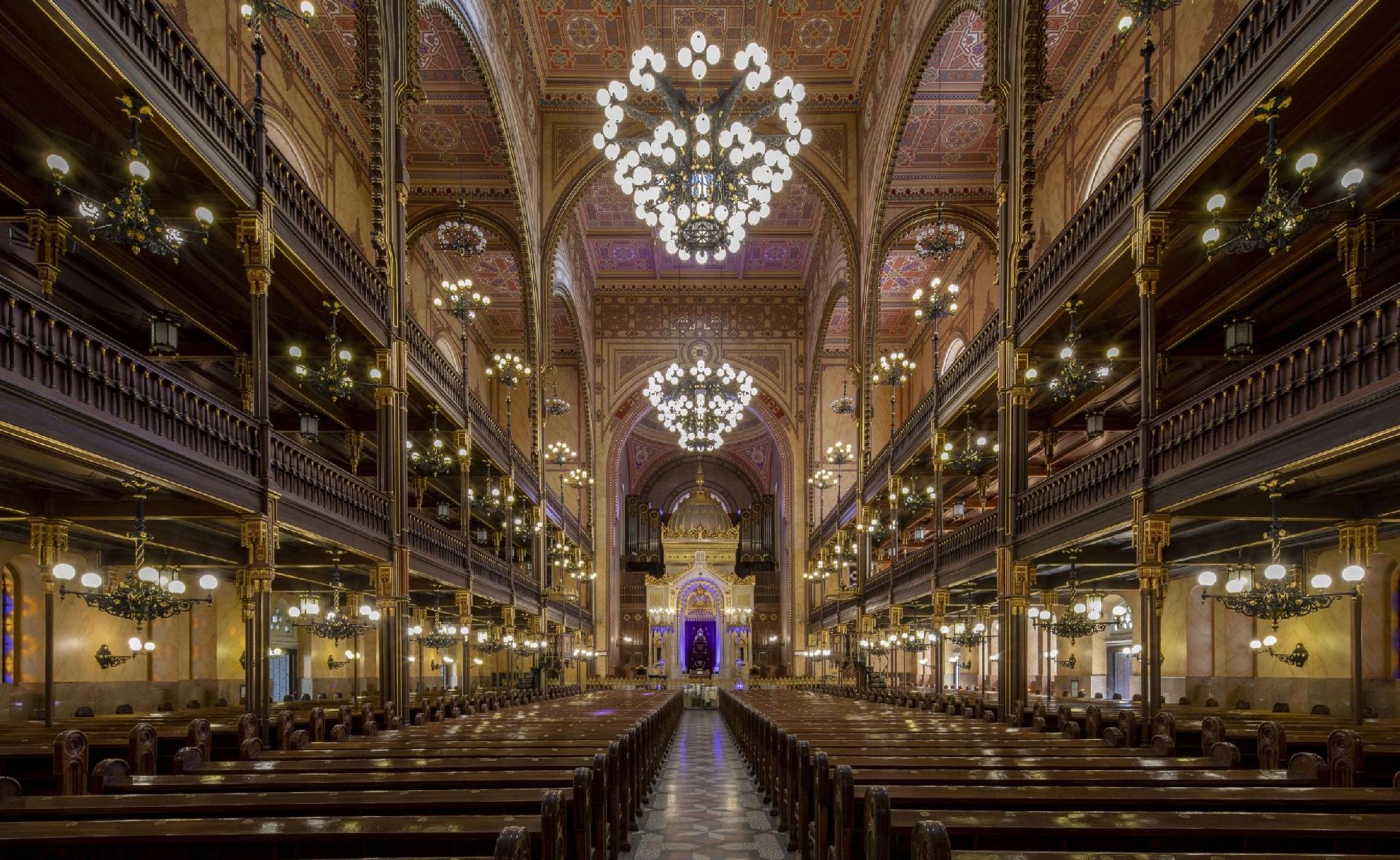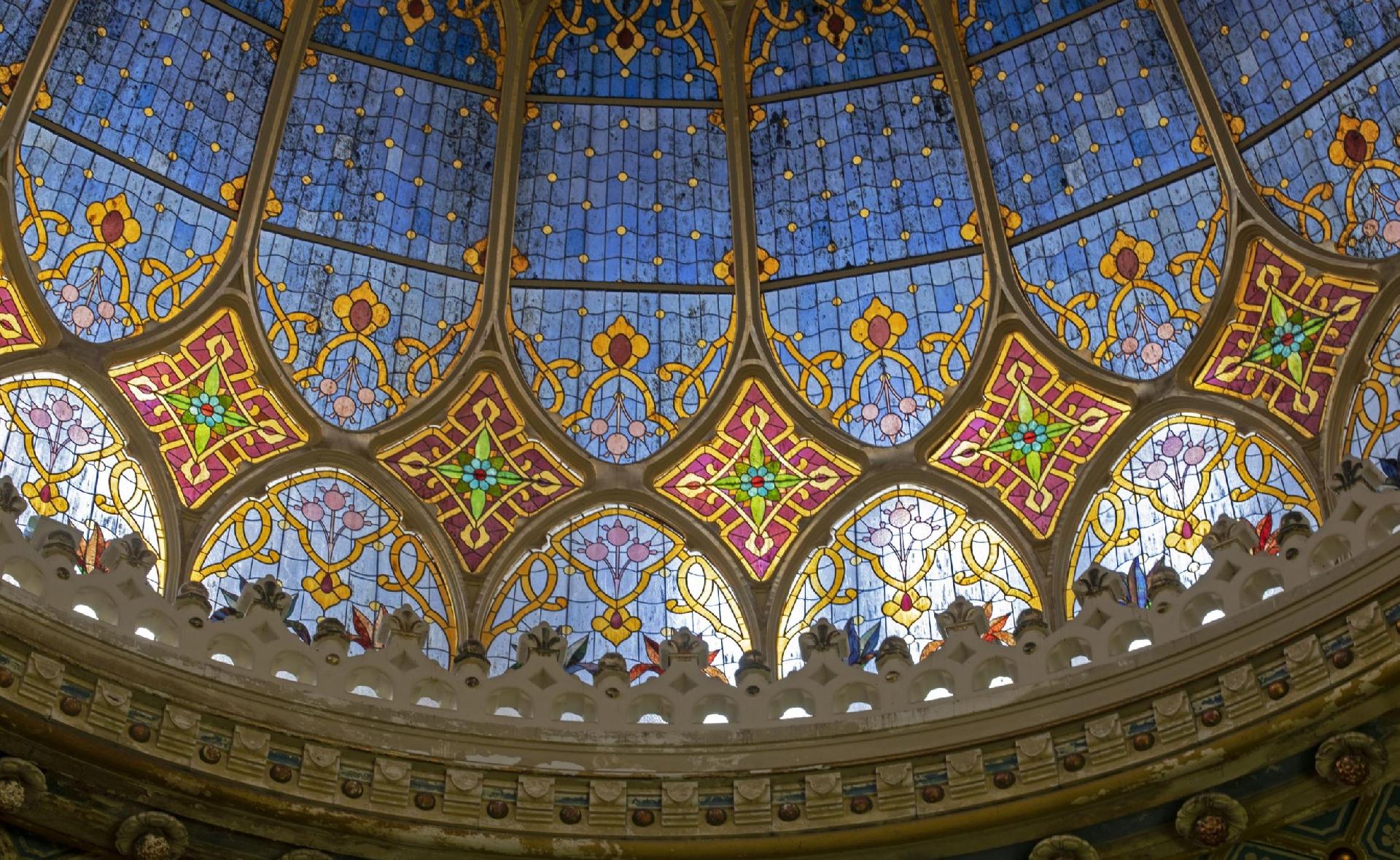Van Schoonbekestraat 31, 2018 Antwerpen, Belgium

The Dohány Street Synagogue (photo: F. Tóth Gábor / MÉM MDK)
The exhibition introduces the sacral architecture of the Hungarian Jewry by presenting individual synagogue buildings. The authors have selected works spanning nearly a millennium in order to present the characteristics of synagogue architecture, the communities that built them and their history. After the medieval synagogues of Sopron, the baroque synagogues of Mád and the neoclassical synagogues of Óbuda, the synagogues of Pest, the jewels of romantic architecture, will also be presented. These buildings, together with the domed synagogues built at the turn of the 19th and 20th centuries (Győr, Oradea, Szeged, Subotica, Novi Sad), were important milestones in the emancipation of the Jews. The sacral buildings of the Jewish community of Kassa, which were built to complement the Slovakian stops in the exhibition, are also shown on separate tables, and are gems of Romantic and 20th century modern architecture.

The glass dome of the New Synagogue of Szeged (photo: Krisztina Bélavári / MÉM MDK)
SYNAGOGUE ARCHITECTURE IN HUNGARY
The fate of synagogues in Hungary is closely intertwined with the history of Hungary. Very few synagogues have survived from the period before the Ottoman occupation. Hungarian synagogue architecture flourished in the 17th and 19th centuries, when Jews were allowed to settle temporarily and then permanently in previously depopulated areas. In 1867, the Emancipation Act, followed by the Religious Act of 1895, gave a great boost to the Jewish population and their communities. During these two centuries, imposing synagogues in the style of churches and town palaces were built. In most cases, whether in small towns, cities or the capital itself, buildings have risen from the ground that exceed the strength of the community, representing its prestige and culture. Dome and tower synagogues were built here, using the technological achievements of the time: cast and then riveted iron; plaster and Rabitz structures; gas lighting and then electricity. Christian church architecture firms also made an appearance in one project or another: roof tiles and pyrogranite by Zsolnay, organs by Angster, stained glass by Miksa Róth and Manó. With the Treaty of Trianon in 1920, like other monuments in the country, many synagogues were moved outside Hungary's borders. The economic crises and growing anti-Semitism after the First World War did not have a positive effect on synagogue architecture. From the 1920s, synagogues were built only sporadically. After the Second World War, many synagogues and Jewish communities in the country ceased to exist or became depopulated. The Jewish central body, under pressure from the state, sold several buildings: in some cases, cultural institutions, concert halls or libraries were built in what had previously been synagogues, but others were converted into furniture stores, television studios or warehouses. And some were demolished for urban renewal. The expected renaissance after the change of regime (1989/1990) was not to be. In recent years, several synagogues have been renovated with government support. No new, imposing synagogues have been built in the last 30 years, but small prayer rooms have been established throughout the country. Several formerly disused buildings have been converted by the Jewish community for worship.
Visit only on reservation: 32 2 209 0750 / info@bmki.be
The exhibition is a joint project of the Hungarian Academy of Arts and the Hungarian Museum of Architecture and Documentation Centre for Historic Monument Protection.
Curator: dr. Ágnes Ivett Oszkó, art historian, MÉM MDK
Project Manager: Ágnes Komlóssy, Head of the International and Transnational Affairs Department of the MMA
